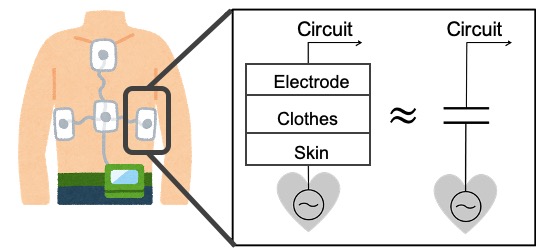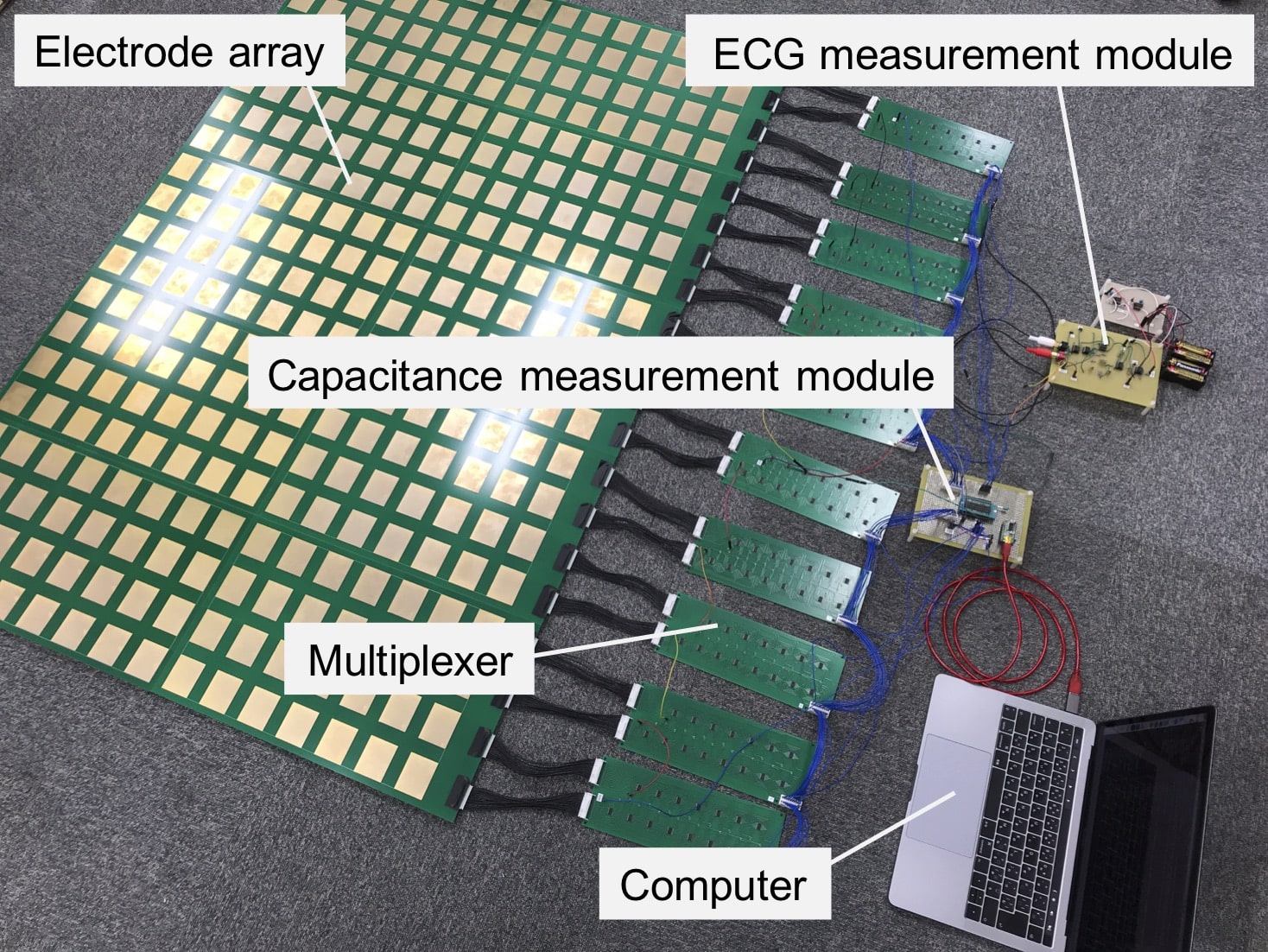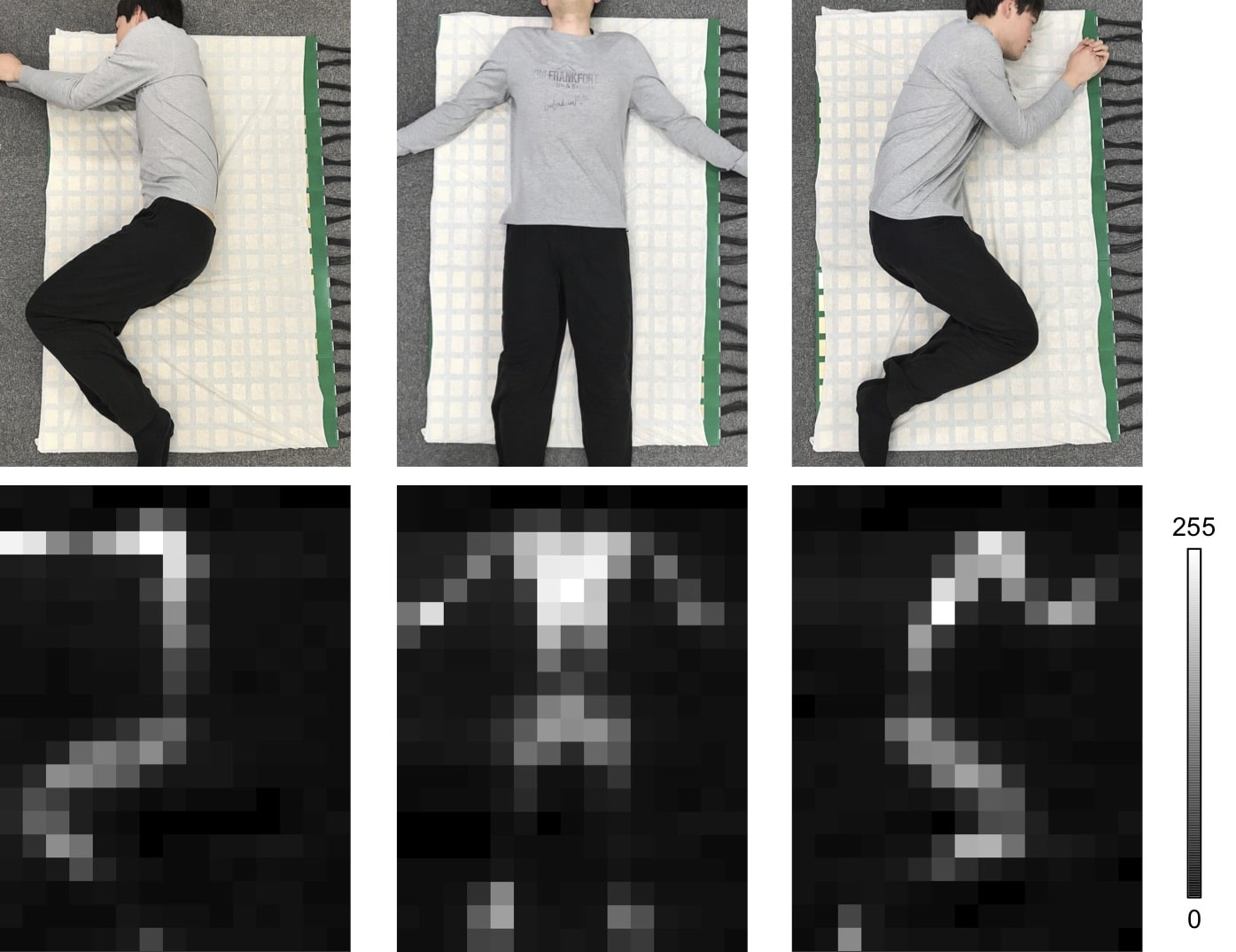TOP

Non-restraint electrocardiographic (ECG) measurement system

It is believed that routine monitoring of heart health can lead to early detection of heart failure in addition to prevention of the worsening of the condition.
General electrocardiography equipment is not suitable for routine monitoring due to the necessity of complicated electrode application and the discomfort of electrode application.
To address the above issues, electrocardiographic measurements using capacitance-coupled electrodes, in which electrodes are not affixed to the human body, have been proposed.
Capacitively coupled electrodes provide an electrical connection between the human body and a circuit, with the skin, clothing, and electrodes forming a capacitor.
This enables unrestrained electrocardiographic measurements without the hassle of wearing the device and is expected to be used for routine monitoring of electrocardiograms.
While the use of capacitance-coupled electrodes makes it possible to measure electrocardiograms in a clothed state, there are issues such as the difficulty
of maintaining the positional relationship between the human body and the electrodes. Therefore, we propose a measurement system using an electrode array
that can flexibly respond to changes in the posture of the human body during bedtime.This system uses a mechanism to measure electrocardiograms after detecting the posture and position of the subject,
thus enabling posture estimation and electrocardiograms with the same electrode array.This technique is expected to enable stable electrocardiographic measurements without being affected
by postural changes that may occur during sleeping, thereby overcoming the problems associated with capacitance-coupled electrodes.


Machine learning is used to detect the posture and position of the measurement subject. The human body map is obtained by having the person to be measured lie down on the electrode array and measuring the capacitance of each electrode.
The neural network learns about this sleeping human body and builds an inference model that identifies the human body's posture. As an initial study to estimate human body posture from measured capacitance, we are currently targeting the three typical
sleeping postures shown in the left figure (left-facing side-lying position, supine position, and right-facing side-lying position).
